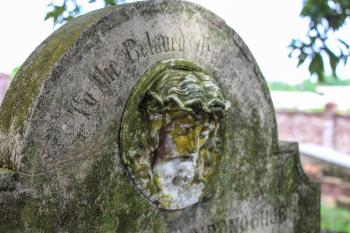Glossaries
| Term | Definition |
|---|---|
| eagle | Symbol of Christ because he flies straight into the sun just as Christ, in his ascension, went straight up to the light. He is the attribute of John the Evangelist and is one of the four 'apocalyptic animals'. "And in the sight of the throne was, as it were, a sea of glass like to crystal; and in the midst of the throne, and round about the throne, were four living creatures, full of eyes before and behind. And the first living creature was like a lion: and the second living creature like a calf: and the third living creature, having the face, as it were, of a man: and the fourth living creature was like an eagle flying. And the four living creatures had each of them six wings; and round about and within they are full of eyes." (Apocalypse 4: 6-7 (KJ)). |
| ecce homo |
The title 'ecce homo' with the image of a scourged Christ with a crown of thorns refers to the moment when the Roman governor Pontius Pilate showed Christ to the Jewish people and said, "Behold the man!" (John 19:5). The high priests and officers then called for the crucifixion of Christ. The image of the scourged Christ with a crown of thorns, mocking mantle and scourge in wounded hands entitled 'ecce homo' is a popular theme in Western art. On funerary monuments, the theme occurs mainly in Catholic cemeteries in the form of porcelain heads of Christ and is seldom seen on protestants monuments. |
| egg | Symbol of birth and new life. In Christian circles there is the parable of Christ rising from the grave with the chick crawling out of the shell; the white color of the bowl symbolizes purity and perfection. Many symbolic customs exist around the egg, such as the Easter egg, a spring symbol as a sign of the awakening fertile nature, but also in connection with the above parable of the resurrection. It was also given to the dead in the grave as strengthening food for the journey to the afterlife. |
| esculap | The esculap or aesculap is an ancient Greek symbol that represents medicine. The symbol consists of a staff around which a snake winds itself. In the esculap, the snake symbolizes healing, because this animal can shed its skin, which stands for rebirth and healing, but can also cause death by its bite. |
| evangelist | The early Christian Church, which made extensive use of symbolic imagery, sometimes presented the Evangelists as four winged creatures: Matthew was a human, Mark a lion, Luke an ox, and John an eagle. The source of this symbolism was a passage from Ezekiel (1: 5-14), in which the prophet tells of a strange vision of the four beings. The book of Revelation (4: 6-8) describes similar animals that surround the throne of God. They are therefore commonly known as the 'apocalyptic animals'. Man represents Matthew because it is his gospel that begins with the family tree of Christ's forefathers; Mark begins with the voice calling in the desert, an allusion to the lion; The ox, the sacrificial animal, is Luke, whose gospel begins with the description of the sacrifice of the priest Zechariah; The eagle, who approaches heaven closer than all birds to other birds, is John, who sees God most closely in his vision. |



